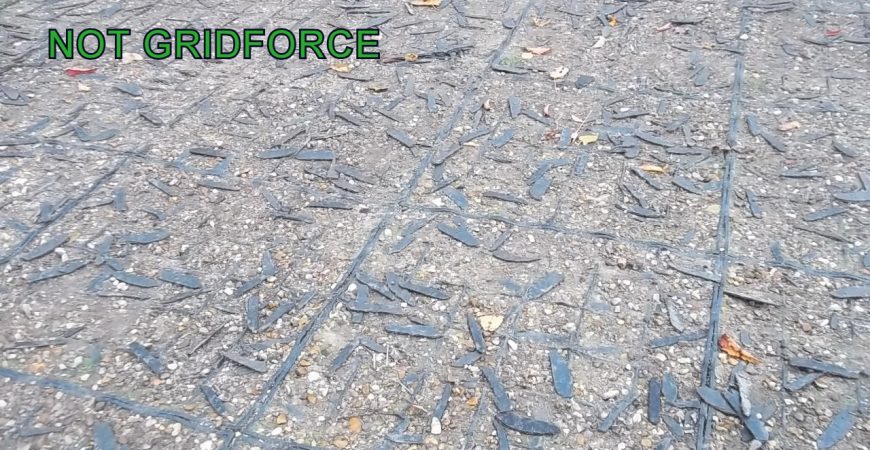
From Gridforce: Competitors grid manufactured from HDPE
The picture above is a competitors grid manufactured from HDPE, as you can see all the black bits are plastic that have broken off. When it comes to plastic pavers on the market, there is often a discussion about the difference in the type of plastic used to manufacture the paver.
Most plastic pavers on the market are manufactured from what is known as a HDPE (high density polyethylene), which is a polyethylene thermoplastic made from petroleum. High density polyethylene is a readily available plastic, therefore economical in cost. Although HDPE has a high tensile strength, the material is rigid, and in sub-zero temperatures and the freeze thaw cycle; the plastic becomes more brittle and is subject to stress fractures and cracking.
Gridforce is manufactured from LDPE (low density polyethylene). LDPE is a thermoplastic made from the monomer ethylene and is more difficult to get hold of, consequently a more expensive product. LDPE is less brittle and more flexible, therefore when used in a car parking situation can cope more effectively with the lateral stress movement created when being trafficked.
When grid pavers are tested for strength, they are usually analysed when filled with aggregate. As a result, this doesn’t give a true reading of the strength of the plastic as it is relying on the gravel. Gridforce is however tested empty. This means that the tensile strength can only increase when the pavers are filled.
